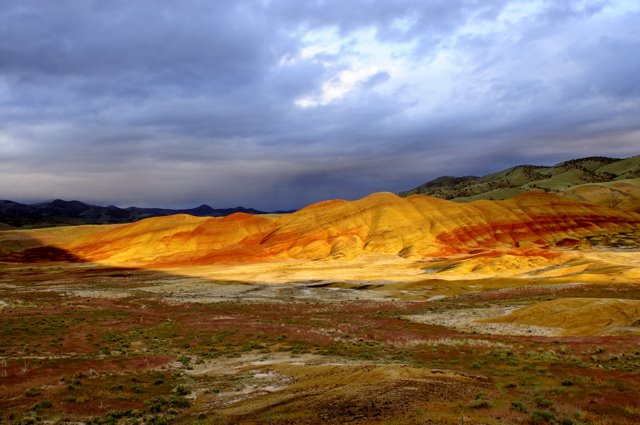 I had a really neat opportunity pop up yesterday. These really nice people came into the park with an awesome vintage truck on a trailer behind their Bounder Motorhome.
I had a really neat opportunity pop up yesterday. These really nice people came into the park with an awesome vintage truck on a trailer behind their Bounder Motorhome.I had been down at the lower end of the park photographing this railroad bridge while experimenting with the monochrome feature of my camera and met them when I returned to my rig.
We talked about doing some photography of the truck while parked on the lawn next to the river and decided to do it in the morning. I took some time to study some of my reference materials and a few online resources about how to photograph cars and trucks. All the tips I picked up came in really handy. Here's what I've learned so far:
- Shoot from a 3/4 angle as you would for a portrait of a person. Get both headlights in the frame with the far one just barely visible to start. Work this pose with more and less angle until you feel you have it down.
- Turn on the headlights, especially in the darker lighting situations. I forgot to do this!
- Use a ladder and shoot from an elevated position. Again more around and get several angles.
- Watch the light and use your flash even in bright sunlight. I actually got started too late. It was after 8:00 Oclock AM when I started and I should have been working this thing at daylight. The sky here was cloudless and the light became very harsh with high contrast and deep shadows. I set my on-camera flash to manual and full power. I also bumped my exposure from one to two stops . The paint on the truck has a reflective pearl fleck additive in it and the fenders were all white. This meant I had to shoot as if I were shooting snow. I had to watch the meter and my histograms closely to get it right. Even then I had a lot of editing to do in the computer later.
- Use all your lenses. Well not all I guess. I used my nikkor 12-24 and my Nikkor 18-200 for all my shooting. I could get close and still have a fairly wide field of view with either lens and I needed it for this project. I also use a circular polorizer on the 18-20 lens. I have one for the 12-24 too but the light was changing so fast I didn't feel like I wanted to stop to go get it. It is with one of my larger lenses and I use a stepping ring to make it fit. I'm afraid I wasn't quite prepared in that respect.
- Be sure to work all the chrome and the inside of the vehicle. I had to break out my own chrome polish to get the bugs off the mirror backs. I wanted to shoot the inside of the vehicle while keeping a large portion of the mirror back in the frame with a reflection of the hood or whatever. This took some work and the inside of the truck wanted to go dark due to the contrast. Getting some of the Chrome side moldings right took some work too. My favorite is a chrome piece that says FORD on it with the blue sky reflected in the shiney metal. It's really cool!
- This truck has a polished wooden bed and round steel fuel tank mounted in the bed. My lighting situation didn't allow me to work that part of the truck so I'll be doing that tonight and tomorrow morning.
All in all this is a really fun project and I'm looking forward to doing more photo work on it. I shot 72 frames this morning of which five of them turned out to be usable. That's a pretty good ratio for photography. I hope I can do as well next time.

I printed a few 4x6's and an 8x10 for the owner. I hope he likes them! This is the last image I shot. I used my 18-200 lens here and cropped in tight. I think I should have left a little more room in front of the rig Though. I'll do that next time.

No comments:
Post a Comment